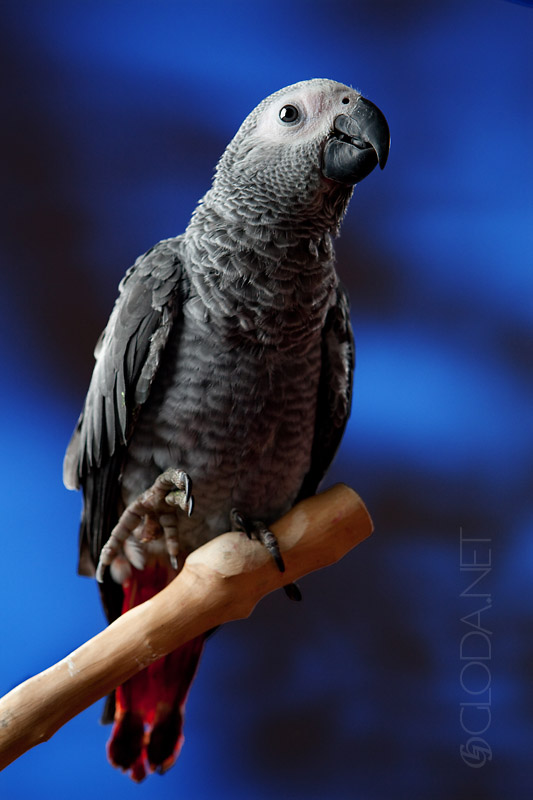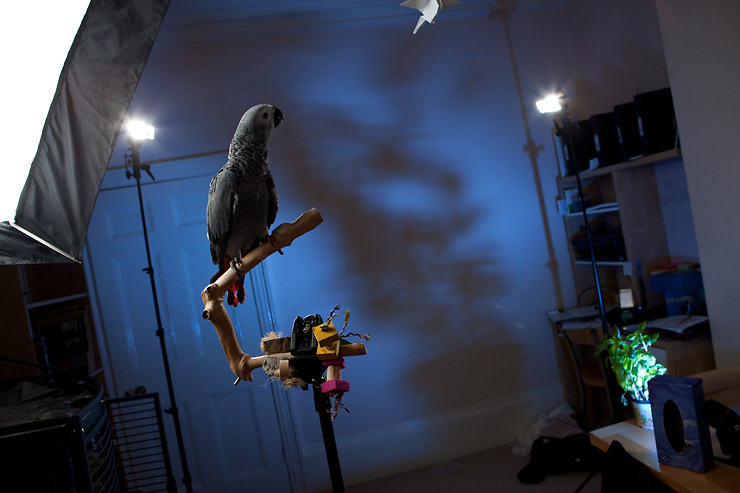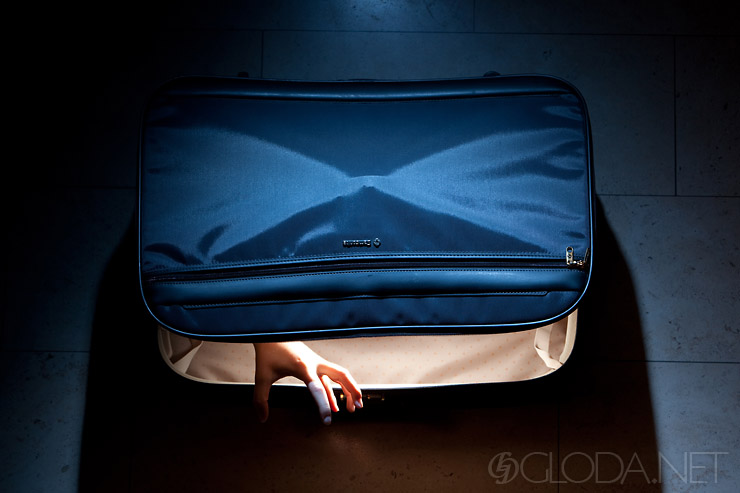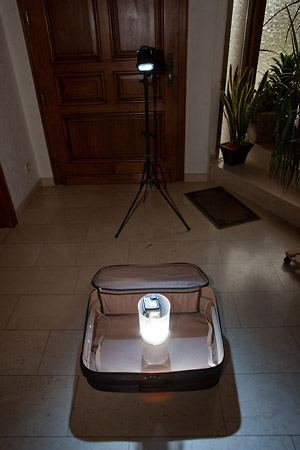
Meet Zazu, Alison’s African Grey parrot. She’s a crazy one. (Zazu, not Alison.) When I took this photo, Zazu was about three months old. You may already have seen this photo in my PAD collection, but I wanted to show you a bit of behind the scenes information from when I took this. The setup shot below should give you a pretty good idea of how I managed to light Zazu in her ‘natural habitat’.

So, first of all, for Zazu to be sitting somewhere outside her cage with not too much clutter around her, I first set up a lightstand with a superclamp, which in turn held one of her perches in place. To keep her occupied we let her play with a pen top, one of her favourite toys.
The lights are all triggered using Canon’s ETTL system. An on-camera ST-E2 sent out the signal to the slaves, which were all set to manual mode. The lights on the left and right in the back are 430EX Speedlights with my DIY snoots on them. (The snoots are cookie boxes lined with gaffer tape.) The snoots shape the light into a tight beam, to reduce flare to a minimum and to avoid the light bouncing around the room.
The softbox on the left is the Westcott Apollo set with a 580EX inside it. It’s rotated towards the camera so as to avoid it spilling light onto the wall in the backround. On the table on the right side is another 580EX. This one is flagged by a tissue box (whatever comes handy, really!) and I put a CTB gel on it in order to end up with a strong blue background. I also didn’t want the background to be homogenous, so I placed a basil plant in front of the light. The shadows from the plant add a bit of interest to the background.
Oh and the white thing floating at the top of the image which Zazu is staring at in the setup shot is an origami crane. She has since taken care of it.

 A bit of behind the scenes information about my PAD for September 16th 2009. The initial concept for the picture was to have a hand come out of a suitcase, and to add some visual drama by putting a lightsource inside the suitcase too.
A bit of behind the scenes information about my PAD for September 16th 2009. The initial concept for the picture was to have a hand come out of a suitcase, and to add some visual drama by putting a lightsource inside the suitcase too.